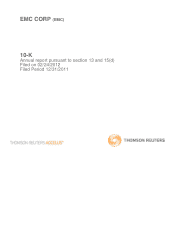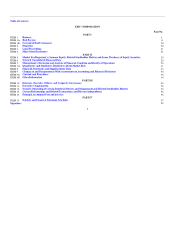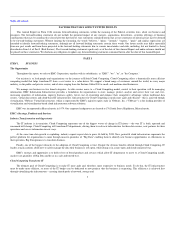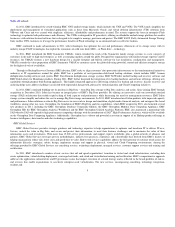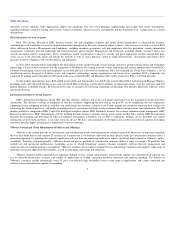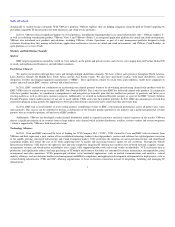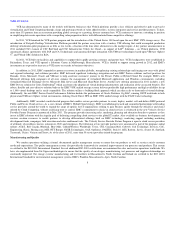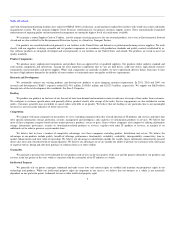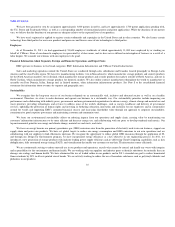EMC 2011 Annual Report Download - page 8
Download and view the complete annual report
Please find page 8 of the 2011 EMC annual report below. You can navigate through the pages in the report by either clicking on the pages listed below, or by using the keyword search tool below to find specific information within the annual report.
Table of Contents
dynamically to variable business demands. With VMware's platform, VMware vSphere, they are helping companies along the path of Cloud Computing by
providing compatible IT infrastructures for both businesses and cloud service providers.
In 2011, VMware released significant updates to several products, including the flagship product in its cloud infrastructure suite – VMware vSphere 5 –
as well as its desktop virtualization product, VMware View 5, and VMware vFabric 5, an integrated application platform for virtual and cloud environments.
VMware also introduced new products and solutions, including VMware vCenter Operations, as part of a new management portfolio designed to help
customers transform how they manage infrastructure, applications and business services in virtual and cloud environments; and VMware Cloud Foundry, an
open platform as a service (PaaS).
Markets and Distribution Channels
Markets
EMC targets organizations around the world, in every industry, in the public and private sectors, and of every size ranging from the Fortune Global 500
to small- and medium-sized businesses and individual consumers.
Distribution Channels
We market our products through direct sales and through multiple distribution channels. We have a direct sales presence throughout North America,
Latin America, Europe, the Middle East, South Africa and the Asia Pacific region. We also have agreements in place with many distributors, systems
integrators, resellers and original equipment manufacturers ("OEMs"). These agreements, subject to certain terms and conditions, enable these companies to
market and resell certain EMC systems, software and related services.
In 2011, EMC continued our commitment to accelerating our channel partners' business by developing and releasing channel-only products with the
EMC VNXe series of unified storage systems and EMC Data Domain DD160. This is the first time EMC has delivered channel-only products. In conjunction
with these product launches, we introduced a comprehensive and integrated go-to-market plan that has enabled our partners to penetrate and better serve
existing markets as well as sell to new customer segments. Additionally, we created an Authorized Reseller category as a part of the EMC Velocity Solution
Provider Program, which enables partners of any size to easily add the VNXe series into their product portfolio. In 2011, EMC also announced a revised deal
registration program giving partners the opportunity to better plan their business and realize sales sooner than they previously had.
In 2011, EMC had a record number of active selling partners contributing revenue to EMC, with balanced performance across all partner sizes, types
and maturities. This success can be attributed to having a combination of the broadest product portfolio in the industry and a partner program that rewards
partners who are trained to position, sell and service EMC products.
Additionally, VMware has developed a multi-channel distribution model to expand its presence and reach various segments of the market. VMware
derives a significant majority of its revenues from its large indirect sales channel which includes distributors, resellers, systems vendors and system integrators
– which is supported by VMware's field-based sales teams.
Technology Alliances
In 2011, Cisco and EMC increased the level of funding for VCE Company LLC ("VCE"). VCE, formed by Cisco and EMC with investments from
VMware and Intel, represents a joint venture of four established technology leaders to develop products, services and solutions for a global partner ecosystem
in the rapidly growing converged infrastructure and Cloud Computing market. VCE accelerates the adoption of converged infrastructure and cloud-based
computing models that reduce the cost of IT while improving time to market and increasing business agility for our customers. Through the Vblock
Infrastructure Platform, VCE delivers the industry's first and only completely integrated IT offering that combines best-of-breed network, compute, storage,
management, security and virtualization technologies into a single, fully supported product with end-to-end vendor accountability. VCE accelerates time to
production, and significantly reduces the large percentage of IT budgets and resources that today are consumed by routine maintenance, interoperability, patch
management and other operations. VCE's prepackaged solutions cover horizontal applications, such as unified communications and analytics; vertical
industry offerings, such as electronic health record management and HIPAA compliance; and application development environments for deployments, such as
virtual desktop infrastructure (VDI) and SAP, allowing organizations to focus on business innovation instead of integrating, validating and managing IT
infrastructure.
7

